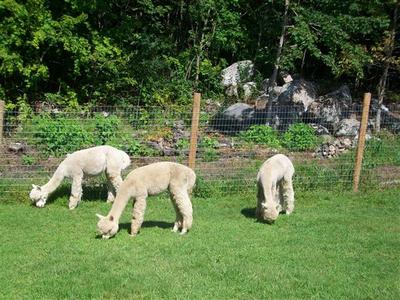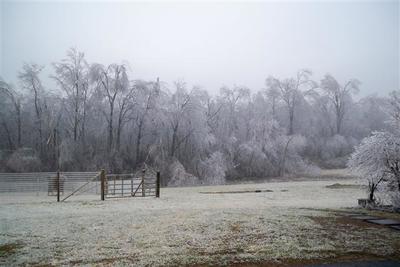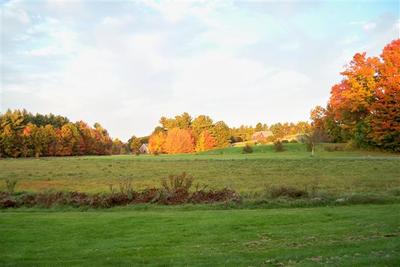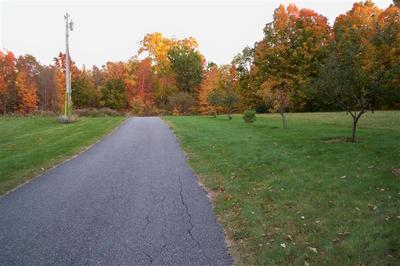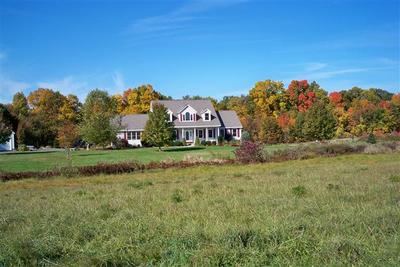About Us
Craig and Krista Pastrone, both graduates of MIT, started Saint Isidore's Alpacas in 2006. Our approach has been to carefully select sires and dams from the most successful breeding programs to capitalize on their achievements and cultivate an exceptional herd. We are focusing on several prepotent blood line combinations, the most notable being: 4Peruvian Legacy, Snowmaster, Vengador, Quechua, Hemingway, Bueno, Caligula, Royal Fawn, and Guellermo. This proved to be a successful starting point for us as we observe the genetic development of our herd and have received positive feedback from other breeders and the show ring.
Having technical backgrounds, we find the genetic possibilities exciting and incorporate statistical information into our breeding decision process. To that end, we strive to collect as much data as we can on our breeding animals. We are impressed with the skin biopsy analysis and use biopsy data to evaluate true density and S/P ratio. We publish this data on our website as it becomes available. This reflects our philosophy of total "transparency" with respect to our program and our animals; we want to be as up-front and clear with clients and potential clients about the characteristics of our animals so as to assist others in making sound breeding decisions.
The first and primary reason we started the farm was to give our children a great environment in which to grow up. The farming lifestyle affords tremendous opportunities for children to learn not only practical skills, such as carpentry (there’s always a need for another building!), land management, and animal husbandry, but also to develop character through hard work, physical exercise, responsibility, and care for other living creatures. The varied activities and experiences that are a natural part of running an alpaca farm, such as training, showing, travel, observing and participating in specialized veterinary care, and interaction with the public for education and sales, all provide wonderful real-life skills for whatever walks of life the children may choose. Raising any livestock also affords many chances to encounter the inevitable cycles of life, from the wonder of birth and new life to the disappointment and loss of illness and death. All this was the primary driving vision behind our decision to raise alpacas.
We are intrigued by the genetic, scientific side of the whole breeding/selection process, and we hope to maintain progress through the intelligent use of all the objective testing techniques that are available to guide us in our breeding choices. However, we do realize that at the end of the day, notwithstanding all the research, data, and careful planning, there is still a bit of art and mystery in the whole affair, and that is part of what makes breeding these animals truly exciting!
Having technical backgrounds, we find the genetic possibilities exciting and incorporate statistical information into our breeding decision process. To that end, we strive to collect as much data as we can on our breeding animals. We are impressed with the skin biopsy analysis and use biopsy data to evaluate true density and S/P ratio. We publish this data on our website as it becomes available. This reflects our philosophy of total "transparency" with respect to our program and our animals; we want to be as up-front and clear with clients and potential clients about the characteristics of our animals so as to assist others in making sound breeding decisions.
The first and primary reason we started the farm was to give our children a great environment in which to grow up. The farming lifestyle affords tremendous opportunities for children to learn not only practical skills, such as carpentry (there’s always a need for another building!), land management, and animal husbandry, but also to develop character through hard work, physical exercise, responsibility, and care for other living creatures. The varied activities and experiences that are a natural part of running an alpaca farm, such as training, showing, travel, observing and participating in specialized veterinary care, and interaction with the public for education and sales, all provide wonderful real-life skills for whatever walks of life the children may choose. Raising any livestock also affords many chances to encounter the inevitable cycles of life, from the wonder of birth and new life to the disappointment and loss of illness and death. All this was the primary driving vision behind our decision to raise alpacas.
We are intrigued by the genetic, scientific side of the whole breeding/selection process, and we hope to maintain progress through the intelligent use of all the objective testing techniques that are available to guide us in our breeding choices. However, we do realize that at the end of the day, notwithstanding all the research, data, and careful planning, there is still a bit of art and mystery in the whole affair, and that is part of what makes breeding these animals truly exciting!
About Us, Too
So, how did we get here? Well, Krista always had, somewhere in the obscure, outer reaches of her imagination, the romantic idea of raising sheep on a green hillside, spinning their wool (never mind I had no idea how to spin), and knitting it into beautiful, finished garments. Not for material gain, but for the sheer, bucolic romance of the thing: to see and make something from absolute start to finish; from animal to afghan, so to speak. It was a distant dream, and truthfully, rather vague.
While flipping through the pages of a Sheep & Wool Festival program in the May of 2006, Krista came across an alpaca farm ad with a photo of an alpaca. WHAT is THAT??????????? Ok, so my knowledge of the animal kingdom was incomplete: I had never heard of an alpaca, let alone seen one. Of course, having grown up with Tintin books, I knew what a llama was: they were the Andean animals that spit at Captain Haddock. But what was this fluffy, fantastic creature that appeared to be a cross between a sheep and a giraffe, with a little Dr. Seuss thrown in?
Enter the internet and Krista’s somewhat obsessive tendency to study a subject into the ground. “Hey, guys, look at this!” – poor family, they didn’t suspect what was coming – “Alpaca can be raised and bred for profit, and they have a luxury fiber – better than wool!” “And they don’t eat much relative to other livestock!” “And they’re very hardy!” “And they don’t require much land or shelter!” Etc., etc. Sound familiar? You know the rest of the story. Discussion. More web surfing. Debate. Find AOBA website. Look up local farms. Visit first farm. More Debate. More research. Visit next farm. More Discussion. Visit next farm. Ad iterum several times. Then Dad makes famous declaration (August, 2006): “Well, either way, we wouldn’t do anything until spring of next year.” First purchase: September 23, 2006. No experience, no barn, no land, no farm. But the proud owners of one maiden – yep, you read it right – one maiden alpaca.
After the typical ups and downs of most new ventures, relocation to a farm, and one or two surprises, we now have a growing herd, a little bit of knowledge and experience, and plenty more fencepost holes to dig.
While flipping through the pages of a Sheep & Wool Festival program in the May of 2006, Krista came across an alpaca farm ad with a photo of an alpaca. WHAT is THAT??????????? Ok, so my knowledge of the animal kingdom was incomplete: I had never heard of an alpaca, let alone seen one. Of course, having grown up with Tintin books, I knew what a llama was: they were the Andean animals that spit at Captain Haddock. But what was this fluffy, fantastic creature that appeared to be a cross between a sheep and a giraffe, with a little Dr. Seuss thrown in?
Enter the internet and Krista’s somewhat obsessive tendency to study a subject into the ground. “Hey, guys, look at this!” – poor family, they didn’t suspect what was coming – “Alpaca can be raised and bred for profit, and they have a luxury fiber – better than wool!” “And they don’t eat much relative to other livestock!” “And they’re very hardy!” “And they don’t require much land or shelter!” Etc., etc. Sound familiar? You know the rest of the story. Discussion. More web surfing. Debate. Find AOBA website. Look up local farms. Visit first farm. More Debate. More research. Visit next farm. More Discussion. Visit next farm. Ad iterum several times. Then Dad makes famous declaration (August, 2006): “Well, either way, we wouldn’t do anything until spring of next year.” First purchase: September 23, 2006. No experience, no barn, no land, no farm. But the proud owners of one maiden – yep, you read it right – one maiden alpaca.
After the typical ups and downs of most new ventures, relocation to a farm, and one or two surprises, we now have a growing herd, a little bit of knowledge and experience, and plenty more fencepost holes to dig.


